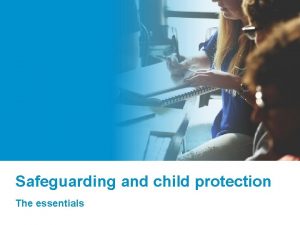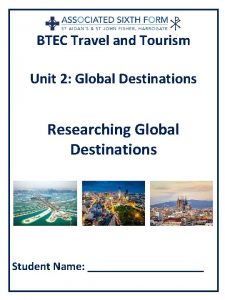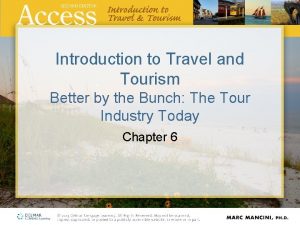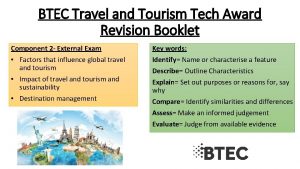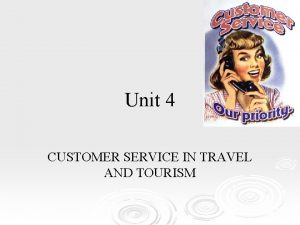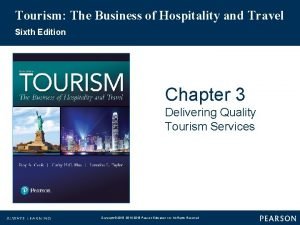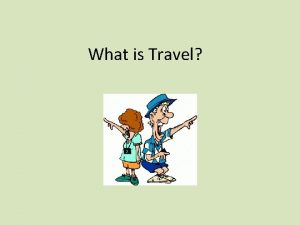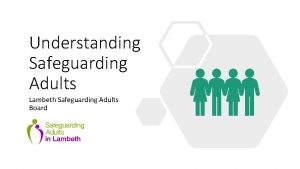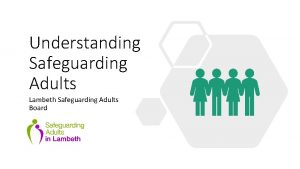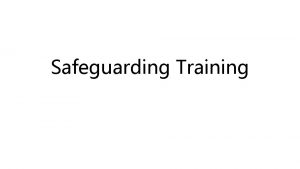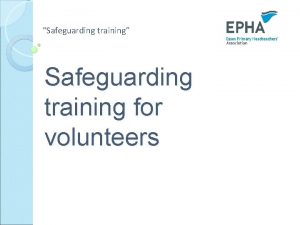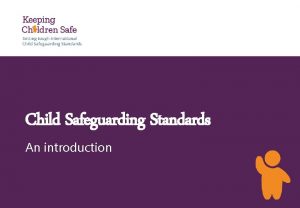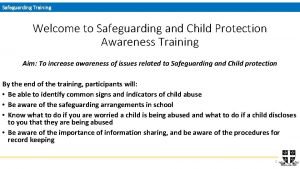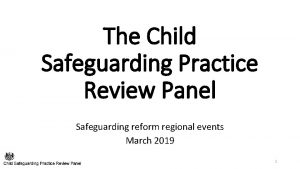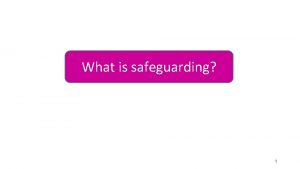CHILD SAFEGUARDING IN TRAVEL TOURISM Session 2 Child















- Slides: 15

CHILD SAFEGUARDING IN TRAVEL & TOURISM

Session 2: Child Safeguarding in Tourism and Travel! Why it is important? Cultural Perspective; – Children are Gifts from God! – Children should listen and obey adults! – Participation in decision making process was different before but steps are taken to be inclusive of Children’s Voices! – Tech Savvy now! Children

Why Child Safe Tourism in Important! – In 2015, all 193 United Nations Member States agreed to 17 goals for sustainable development. – Under goal eight, 12 and 14 of the 2030 Agenda for Sustainable Development, the world acknowledged the importance of tourism and committed to promoting sustainable tourism.

Continued’ Child Safe Tourism and Volunteering are leading global forces for positive change!

Continued’ CHILDREN; ü Everyone wants to do the right thing for children, and tourism operators can be the leaders and educators in child safe tourism. ü Tourism operators are ambassadors for Fiji and children are part of this picture for Fiji. ü Tourism operators are part of the solution and play an important role in keeping children safe.

Continued’ RESPONSIBLE TOURISM; ü There is a growing demand from tourists for more ethical/responsible and child safe choices in travel experiences. ü Child Safeguarding is part of responsible tourism and volunteering. ü Child safe tourism is about sustainability. It involves continuing the social and economic benefits tourism brings without compromising the safety and wellbeing of children and communities.

Continued’ TOURISM SECTOR ü Part of the operator’s Corporate Social Responsibility ü Operators, tourists and communities can have greater trust and confidence in the activities offered that its safe for children and young people ü Child Safe Tourism = positive and sustainable tourism

What Types of Possible Harm to Children? – Photos taken that breach the privacy and dignity of a child or young person and taken without consent. – Tourists in contact with vulnerable children and young people. – Tourism activities that may embarrass a child or make them feel unsafe. – Tourists not supervised when visiting villages and family homes. – Tourists taking up spontaneous volunteering roles and they have not been properly checked or recorded as a volunteer. – What other possible forms of harm can be identified? – Share good practise examples of child safe and responsible tourism practises?

Key Steps in Being a Child Safe Tour Operator; ü Duty of Care and Do No Harm Practices ü CSG Policies and Procedures Top 5 Child Safe Tourism Tips

Child Safe Tourism Steps LEADERSHIP AWARENESS PREVENTION RESPONDING ONGOING IMPROVEMENT COLLABORATION

Child Safe Tourism Steps LEADERSHIP AWARENESS • Child Safe Messaging to staff, customers, other tour operators • Tour operators have a duty of care to community members and children and can be proactive in creating safe tourism experiences • Tour operators as the educators and gatekeepers of child safe • Tourists are in a position of trust when visiting tourism communities and children and must ensure they do no harm and act in the best interests • Develop an action plan to of the child incorporate child safe practices • While most people do the right thing, • Maintain a child safe focus sometimes tourism can have a negative or across all aspects of the business harmful impact on children and young people (either unintended or intended) • Promoting tourism practices and activities that are positive for • Informing customers and communities about communities and respect the your child safe policies and practices at time rights of children of booking and pre-tour (photos, app. dress etc)

Child Safe Tourism Steps PREVENTION RESPONDING • Incorporating child safe policies and codes of conduct into operating and management systems • Obtain feedback from communities after visiting with a tour group positive and negative feedback • develop and implement a child safe policy that is • suitable to your size and activities and /or onepage code of conduct for your staff that guides them on what is safe conduct with children • Obtain feedback from customers on your child safe measures • Training/information sessions/team meetings for staff and contractors on your child safe policies and measures • Risk Management – assessing your tour activities impact and contact with children and putting in place practical measures to reduce the risks of harm to children and young people. • Engage with community leaders to coordinate on village and community development plans to incorporate child safe tourism measures to ensure visits are controlled and safe. • Have a system in place to hear and respond to any concerns, risks or complaints Report any concerns about customers behaviour/interactions with children to the appropriate authorities

Child Safe Tourism Steps ONGOING IMPROVEMENT/REVIEW COLLABORATION • Review child safe • Child Safe Tourism is a shared practices/policy as part of responsibility team/management meetings as a regular agenda item and • Share best practices with other businesses/operators (awareness • Include child safe risks in your raising), by speaking on panels, organisational risk processes. participating in local business groups, giving talks, contributing to media, etc. • Update and strengthen child safe tourism practices to • Participate in and/or build partnerships ensure sustainability and which work towards stronger child safe impact tourism networks • Child Safe Tourism is of benefit to everyone – tour operators, customers, communities, Fiji and children

Top 5 Child Safe Tourism Tips 1. Have responses prepared for staff when tourists ask about activities that you have decided are harmful or negative for children and communities so this can be communicated in a positive and educative way. 2. As a team list all your tour activities and discuss what will have a positive impact and what may be harmful to children –ask the team what other activities should we offer? 3. Obtain feedback from the community after visiting with a tour group – ask what worked well, where there any problems or concerns, anything happen that made you upset, worried about the safety of your children? 4. Promote your child safe tourism message on your website, brochures, social media, at airports, hotels, posters, T-shirts. 5. Ask children and young people how they would like to welcome tourists and what their ideas are to show Fiji to visitors.

Child Rights
 Safeguarding and child protection the essentials
Safeguarding and child protection the essentials Child safeguarding standards
Child safeguarding standards Mass tourism vs alternative tourism
Mass tourism vs alternative tourism Unit 2 the business of travel and tourism
Unit 2 the business of travel and tourism Unit 2 the business of travel and tourism
Unit 2 the business of travel and tourism The farther reaches of human nature
The farther reaches of human nature Camaraderie
Camaraderie What is the world's largest industry
What is the world's largest industry Journal travel tourism marketing
Journal travel tourism marketing Btec tech travel and tourism
Btec tech travel and tourism Stated and unstated needs travel and tourism
Stated and unstated needs travel and tourism Tourism the business of hospitality and travel
Tourism the business of hospitality and travel Unit 2 leisure time
Unit 2 leisure time The interrelated nature of hospitality, travel and tourism
The interrelated nature of hospitality, travel and tourism Aice travel and tourism
Aice travel and tourism Massachusetts office of travel & tourism
Massachusetts office of travel & tourism
